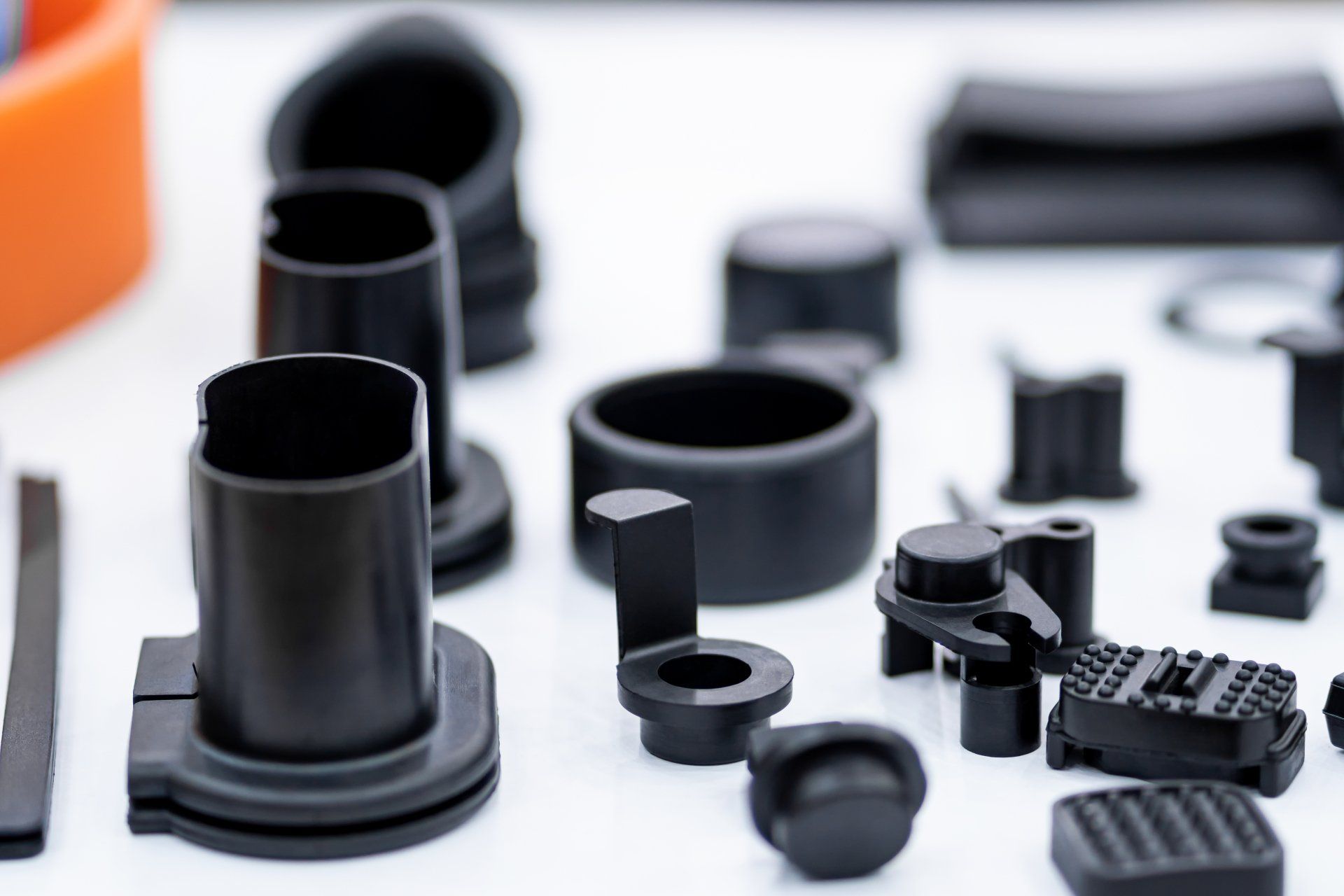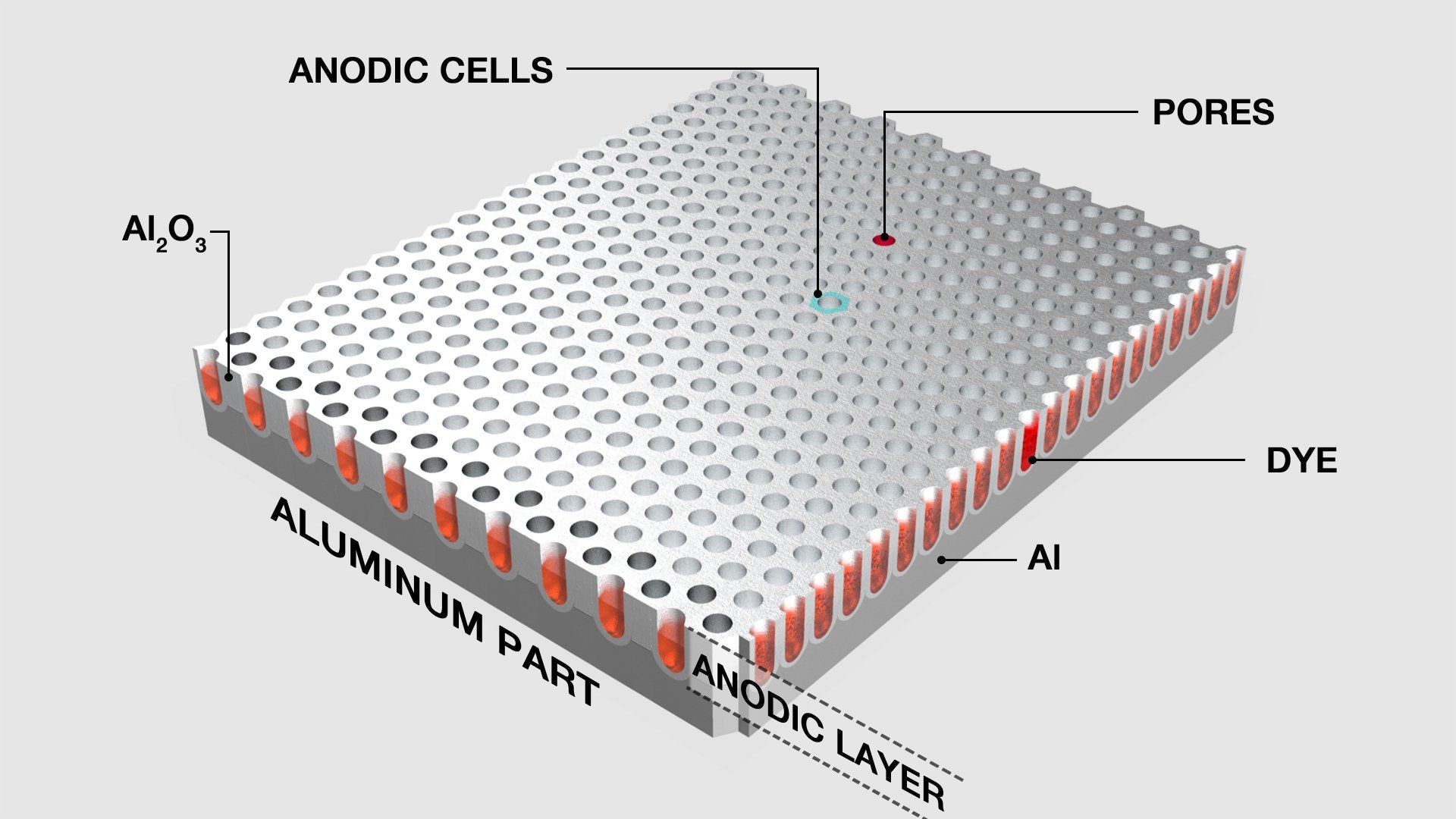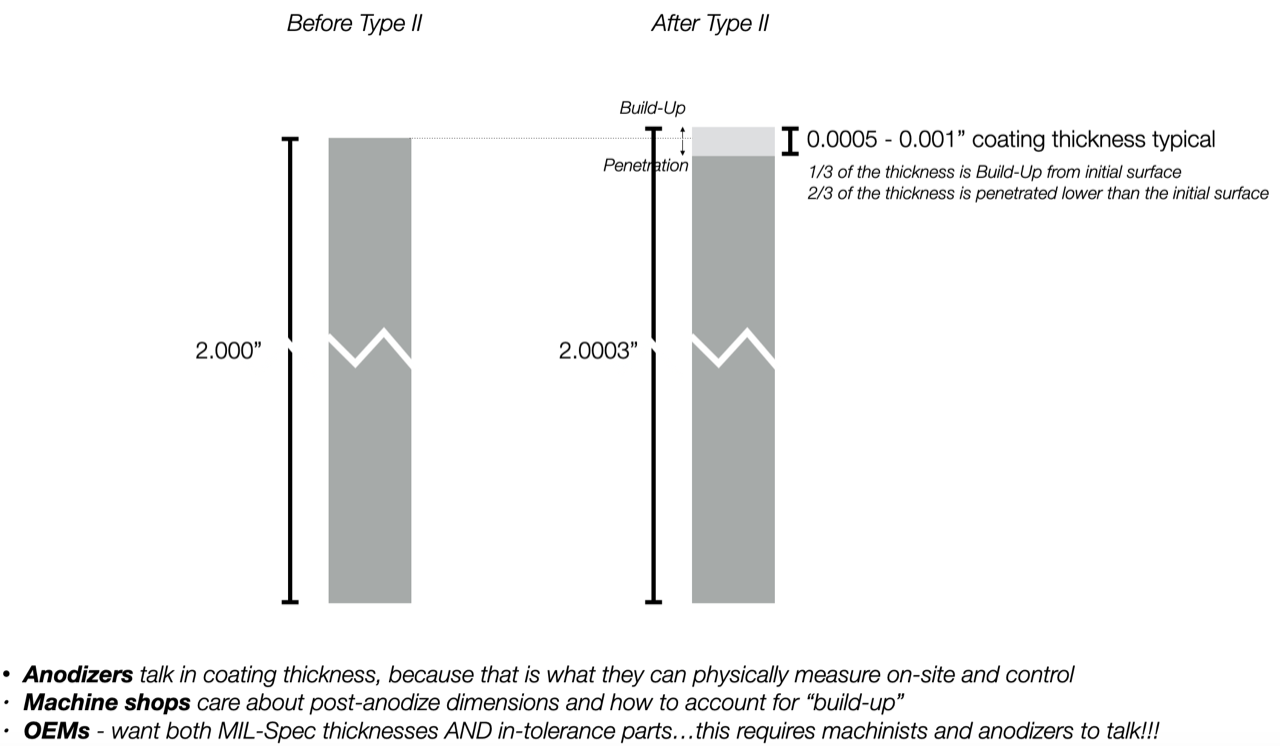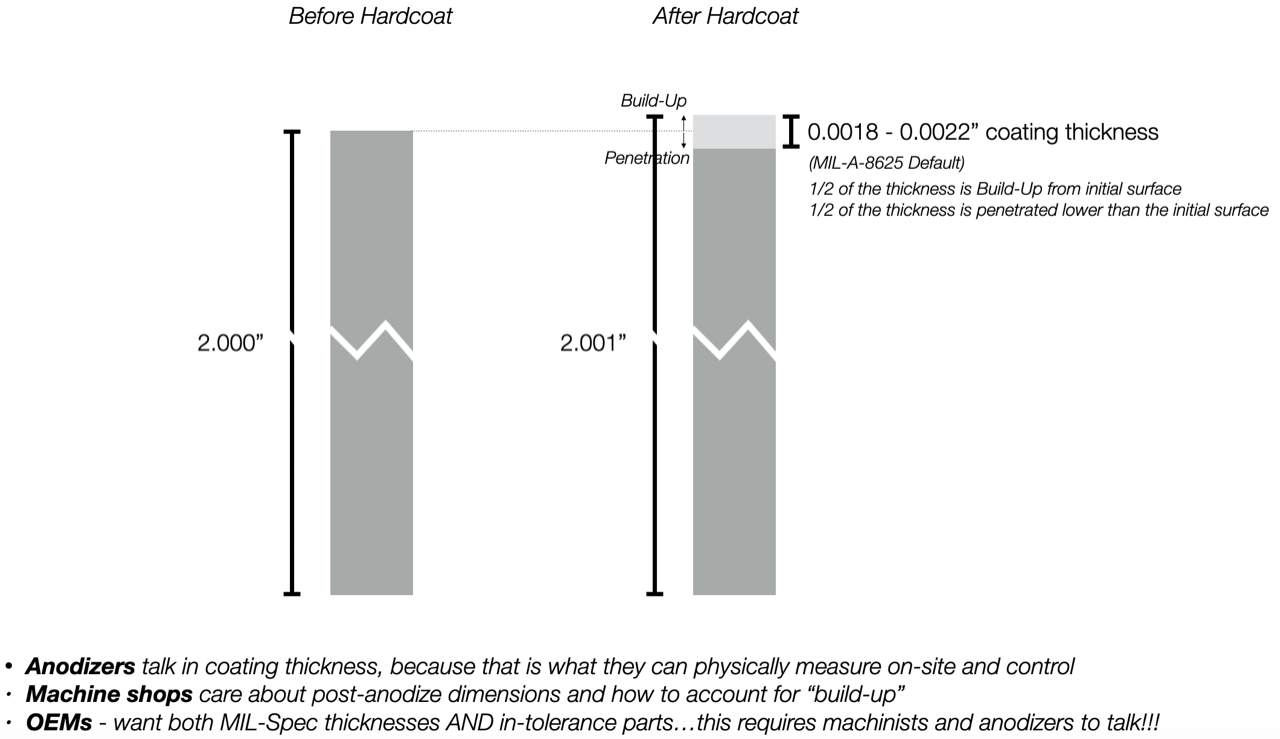Anodize
Hard and Clear Anodizing (colors optional)
Background
Aluminum anodizing is the development of a controlled oxide on the surface of aluminum using an external power source and an electrolyte. Most oxides created in this way have specific structure which can be utilized to enhance the parts function.
Oftentimes, anodize is used for:
- Corrosion protection
- Wear reduction
- Color development
- Dimensional Restoration
or any combination of the above!

Specifications
Aluminum anodizing can be specified and controlled by OEMs, however 95% of the call outs that we see are for the coating to comply with MIL-A-8625. The information below is for informational purposes only - for OUR capabilities please the the "Our Offerings" tab.
Types
In this specification, there are 6 specific types of anodize, each designed with specific properties in mind, and each with its Pros and Cons from a design standpoint.
Type I and IB - are anodic coatings that are developed in a chromic acid electrolyte. They are primarily used as a paint-bonding treatment for aircraft skins, as well as a corrosion preventative for parts where long-term fatigue is a concern. The coating is typically very thin (starting at 0.000029", yes... four zeros), and has as characteristic olive drab color, which can vary depending on the alloy.
Type IC - is a anodic coating that is developed in a mineral acid or mixture of mineral acid and organic acid. It's intent is to provide a non-chromate alternative to the I and IB coatings, but cannot be substitued for I or IB without the express consent of the design authority.
Type IIB - Like IC, IIB is an enviromentally-friendly alternative to chromic acid processes and utilizes sulfuric acid as the electrolyte. Even though it has found good adoption for many parts, this process should not be used for parts with overlapping weld seams, since the propensity to entrap sulfuric acid in this welds could impare the functionality of the part in-service, in certain applications.
Type II - refers to an anodic coating that is developed in a sulfuric acid electrolyte; it is the most-referenced Type of aluminum anodize coating, as it has good wear resistance, good corrosion resistance, and good cosmetics - it is the workhorse of the anodizing finishes. Because fo the thickness of the oxide, as well as its optical clarity, Type II can be supplemented with organic dyes to create a variety of colors to the customer's satisfaction.
Type III - is often referred to as Hard or Hardcoat Anodize, is the most abrasion-resistant of the MIL-A-8625 specified classes. For maximum wear resistance, clear or unsealed hardcoat is often specified. Type III can also be dyed black.
Classes
For Type II and Type III Hardcoat, the color of the anodic coating can be furthered specified by calling out a Class. Class 1, refers to a clear, un-dyed anodic coating. Class 2 refers to an anodic coating that requires coloration after the fact. For Type II, the color options are endless, but for Type III coatings, the only practical shade achievable is black.
Dimensional Considerations
Anodize is a quite unique process from all other commercial metal finishing processes in that the “coating” is actually grown from the part itself. The coating transforms the top-most layer of aluminum into an oxide, and then continues to react with aluminum atoms deeper and deeper into the material until the required coating weight or coating thickness is achieved. The oxide is less-dense than the aluminum that is it on top of so the oxide coating, during anodizing, actually expands upward from the original dimension while at the same time it penetrates into the surface.
This is important for parts designers and machinists alike: How do I accommodate for dimensional changes after anodizing?
For Type I, I(X), and IIB coatings the dimensional change is negligible and tapped holes can be made with standard taps (not oversized) and dimensions should be fine both before and after coating.
Please expect the following from Type II and Type III coatings:
Specialty Finishes Offerings
- Type II - Class 1 (clear) as well as Class 2 (dyed). Specialty Finishes is ready today for Black, Red, Blue, Green and Gold, and can be ready in short order for any custom colors. Specialty Finishes has many years experience in color matching to exacting standards - we like a challenge!
- Type III - Class 1 (clear) as well as Class 2 (black)
For Class 1 finishes, we can accomodate up to 110" x 40" x 18". For Class 2 inquiries, please call or email.

Slide title
Write your caption hereButton
Slide title
Write your caption hereButton
Slide title
Write your caption hereButton
Slide title
Write your caption hereButton

